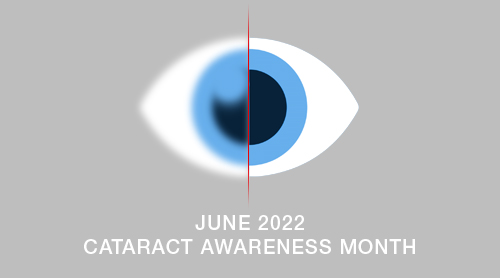
About half of all Australians aged over 50 have some form of cataract, and by the age of 80, almost everyone develops cataracts. Globally, cataracts are the leading cause of blindness. Whilst, genetics, sunlight exposure, smoking, diabetes and other factors may influence the development of cataracts, ageing is the most common cause.
What Are Cataracts?
A cataract is when your eye’s natural lens becomes cloudy. Proteins in your lens break down and cause images to look blurry, hazy or less colourful. This cloudiness prevents light from reaching the retina and distorts the formation of clear images. Cataracts are a condition which is usually associated with ageing.
Cataract Symptoms
Symptoms of cataracts include:
- Cloudy, foggy or fuzzy vision in the distance or when reading
- Distortion of colours (e.g. bright colours become dull)
- Difficultly driving, especially at night
- Sensitivity to bright sunlight or glare
- Frequent changes in glasses prescription (e.g. becoming more short-sighted)
Usually those who have developed cataracts find that their glasses start to become less useful and don’t provide the clear vision that they once did. Changes to the prescription of the glasses doesn’t seem to help much or at all.
Cataract Causes
Ageing is the most common cause. This is due to normal eye changes that begin to happen after age 40. That is when normal proteins in the lens start to break down and what causes the lens to get cloudy.
Other reasons you may get cataracts include:
- genetics
- sunlight exposure
- smoking
- some medical conditions, such as diabetes
- eye injury, eye surgery, or radiation treatments
- some medications, such as corticosteroids
Most age-related cataracts develop gradually. Other cataracts can develop more quickly, such as those in younger people or those in people with diabetes. Doctors cannot predict how quickly a person’s cataract will develop.
Cataract Treatments
If your cataract symptoms are not bothering you very much, you don’t have to remove a cataract. You might just need a new eyeglass prescription to help you see better. You should consider surgery when cataracts keep you from doing things you want or need to do.
Cataracts can only be removed with surgery.
During cataract surgery, your eye surgeon will remove your eye’s cloudy natural lens and will replace it with an artificial lens, called an intraocular lens (or IOL). When you decide to have cataract surgery, your surgeon will talk with you about IOLs and how they work.
Cataract surgery is one of the oldest and most common procedures performed worldwide. Alongside advancements in cataract surgical techniques, there have been significant improvements in IOL replacement technology. Modern cataract surgery offered at Peninsula Eye Centre and VISTAeyes Laser Eye Clinic can reduce your dependence on glasses and can, in many ways, significantly improve your quality of life.
As with any surgery, eye surgery carries risks of possible complications and side-effects.
Please note, you will need a current referral from your optometrist or GP for cataract assessment at Peninsula Eye Centre or VISTAeyes Laser Eye Clinic.
Sources:
www.aao.org
www.healthdirect.gov.au

